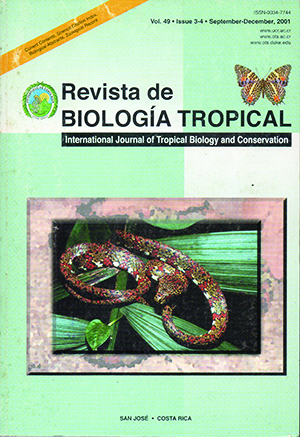Abstract
Feral pigs (Sus scrofa) cause different kinds of damage specially on oceanic islands. Pigs were introduced at Cocos Island, Costa Rica, during 1793 and bred successfully. I analised feral pigs diet, reproductive state, genetics and the effects of predation, in order to gather data on their ecology and impact on certain Cocos Island communities. The diet was studied, during a dry and a wet period, through stomach contents. The genetic variability was determined through PCR analysis on tissue samples which were taken from feral (Cocos Island) and domestic (mainland) pig ear-lobes. Pigs at Cocos were omnivorous, the most important diet category in both seasons was fruits. More pigs consumed fruits during the wet season but the fruits did occupy more somach volume during the dry season. Feral pigs did not disperse exotic seeds nor prey on animal endemic species. 56 % of the hunted pigs were males and 44 % were females. From females in reproductive age, 46 % were pregnant or suckling, and the average number of fetuses in a litter was 4.4. I confirmed a reproductive peak during January/ February but could not demonstrate a reproductive peak during June/July. The low fetuses number per litter could be related with some levels of stress. The genetic variability for all the evaluated parameters within the feral population was low but not as low as expected. I suggest a compensatory mecanism were the inbreeding depression reduces consanguinity and a species sucptible to stocastic, demographic or environmental factors turns to be an adapted species with high resilience.
This work is licensed under a Creative Commons Attribution 4.0 International License.
Copyright (c) 2001 Revista de Biología Tropical

